Part of a series of articles titled Condition of Selected Natural Resources at Mesa Verde National Park: A 2025 Assessment.
Article
Raptors and Songbirds and Hummingbirds, Oh My! Assessing the Condition of Birds at Mesa Verde National Park
A 2025 Natural Resource Condition Assessment evaluated six natural resources at Mesa Verde National Park. This article describes what we learned about the condition of three groups of birds.
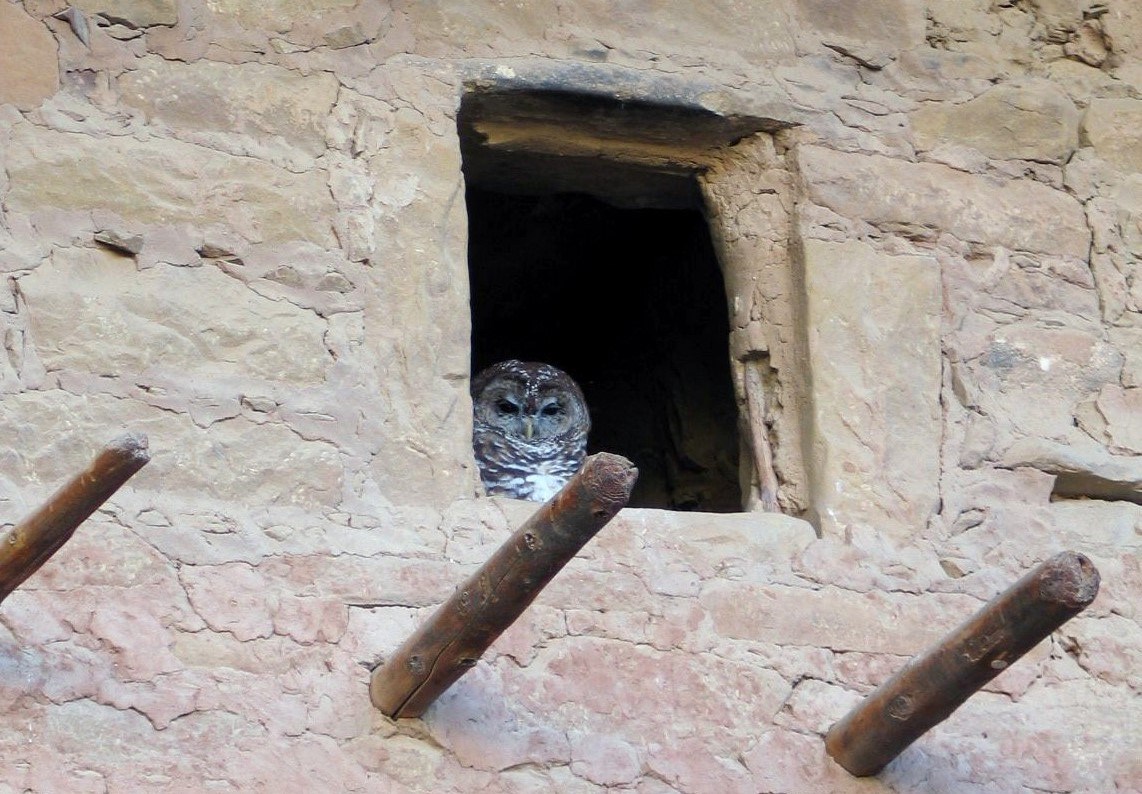
NPS / K Barnett
Three types of birds (Raptors, Passerines [or Songbirds], and Hummingbirds) were among the six resource categories included in the 2025 Natural Resource Condition Assessment (NRCA) for Mesa Verde National Park (NP). Many bird species breed and/or reside in the park due to the variety of available habitats. Researchers detected 82 different bird species in the park during surveys between 2008 and 2022 (Reese et al. 2023), and many more have been observed by the NPS Southern Colorado Plateau Network.
For this study, the NRCA team (led by Conservation Science Partners) carried out a gap analysis for raptors and condition assessments for passerines and hummingbirds. A gap analysis highlights what we know and don’t know about a resource, while a condition assessment is a more thorough evaluation of a resource’s current condition. An overview article describes the intent of the NRCA project, as well as the other resources assessed for Mesa Verde.
Raptors (Birds of Prey)
Mesa Verde NP has three raptor species of particular interest—the golden eagle (Aquila chrysaetos), peregrine falcon (Falco peregrinus), and Mexican spotted owl (Strix occidentalis lucida).
Golden eagle
Golden eagles in the western United States occupy wide open spaces, nesting on cliffs or in trees (Kochert et al. 2002). Park information on golden eagles includes a database of sightings in Mesa Verde from the mid-1920s to 2001. The dataset lacks descriptions of how the data were gathered in every survey year, so it was used carefully. Still, it provides an estimate of changes in eagle detections over time. Park biologists also conducted periodic eagle surveys from 2002 through 2022. Based on these data, the NRCA team concluded that golden eagle populations within the park are likely stable and align with current trends for the species in the region. Notably, Mesa Verde provides nesting habitat (see photo below) and is probably important for the regional golden eagle population.
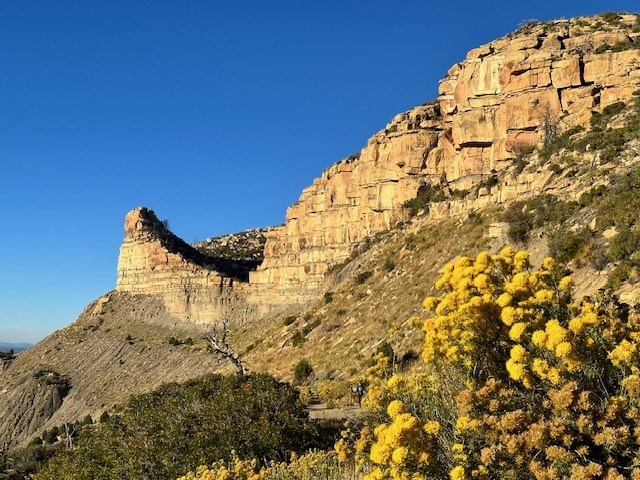
NPS / Tammy Cook
Peregrine falcon
Peregrine falcons usually live in open landscapes near cliffs and canyons. They hunt smaller birds as their prey. In the 1970s, Colorado had only five breeding pairs of peregrine falcons. Documentation of this population low led to strong recovery efforts. By the early 2000s, the peregrine falcon population had increased approximately 10-fold (Craig and Enderson 2004). Right now, we don’t know the status and condition of the peregrine falcon population in Mesa Verde NP and surrounding areas. However, peregrine surveys in the park suggest that the park has supported, and might continue to support, one to three pairs of peregrines at any given time.
Mexican spotted owl
Mexican spotted owls nest in deep canyons, and while their primary prey includes small terrestrial mammals, they also hunt birds, bats, arthropods, and reptiles (U.S. Fish and Wildlife Service 2025). Mesa Verde is on the northern edge of the species’ range in the American Southwest. Records show that Mexican spotted owls have been seen in the park since the 1940s. Formal nighttime calling surveys started in the early 1980s and extend to the present. The last confirmed Mexican spotted owl in the park was documented in 2003. A pair was reported in 2009, but follow-up surveys could not confirm the birds’ presence. Based on the available information, Mexican spotted owls do not appear to be present in the park at this time.
Passerines (Songbirds)
Passerines are perching birds and include all songbirds. Of the 82 bird species detected in the park between 2008 and 2022, 63 species were passerines (Reese et al. 2023).
The NRCA team used the following indicators of condition to assess passerines:
- Population growth rates of 53 species from 2008 to 2022,
- Occupancy (presence or absence) of birds in the park compared to the region,
- Response (change in density) of species to fire-induced habitat change, and
- Response (change in density) of species to time since fire.
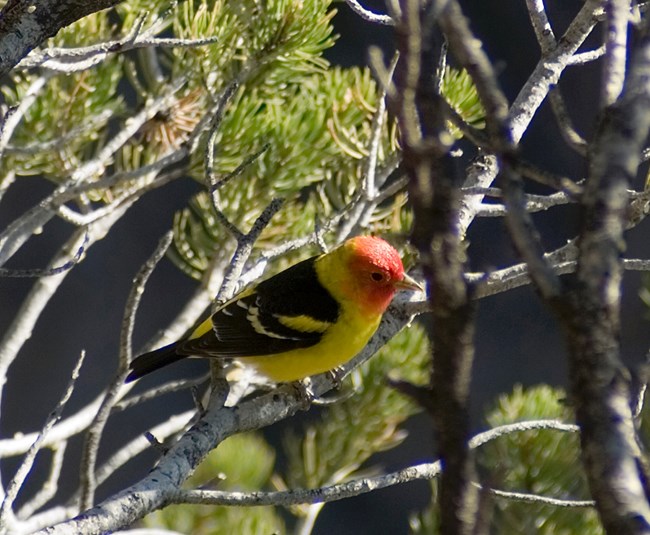
NPS
To estimate passerine population trends, the NRCA team used the Integrated Monitoring in Bird Conservation Regions’ (IMBCR) estimate of trends obtained from the 2008–2022 Mesa Verde NP point-count dataset (Pavlacky et al. 2017). For the comparison of bird occupancy in the park compared to the larger region, the team used the expanded version of the dataset mentioned above, which also included the Colorado portion of the Southern Rockies/Colorado Plateau Region. To assess bird species’ responses to fire, the NRCA team used 2022–2023 bird data collected in Mesa Verde. They also used current plant community data and fire history and perimeter data from the National Interagency Fire Center’s online repository (National Interagency Fire Center 2024).
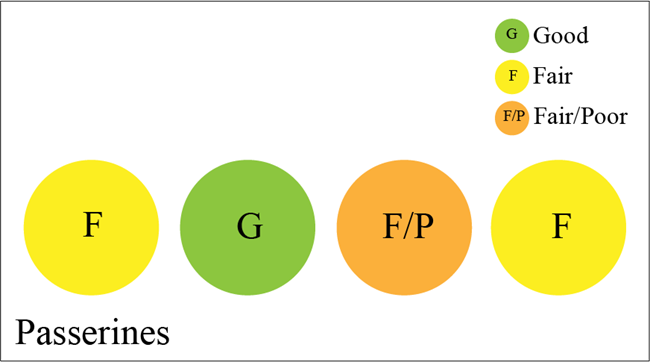
NPS
For the first indicator of condition, the assessment found that 11 of 53 passerine species grew in population size by 10% or more per year. In contrast, 12 of 53 species declined by 10% or more per year. The remaining 30 species remained stable. For the second indicator, the assessment found that 30 of the 40 species analyzed had higher occupancy rates in Mesa Verde than in the larger region. For the third indicator, the NRCA team found that five of 14 passerine species (36%) decreased in density in burned habitat. And for the fourth indicator, six out of 14 species (43%) increased in density as time since fire increased. The NRCA team rated the conditions for these indicators as: fair, good, fair/poor, and fair, respectively (Figure 1).
Hummingbirds
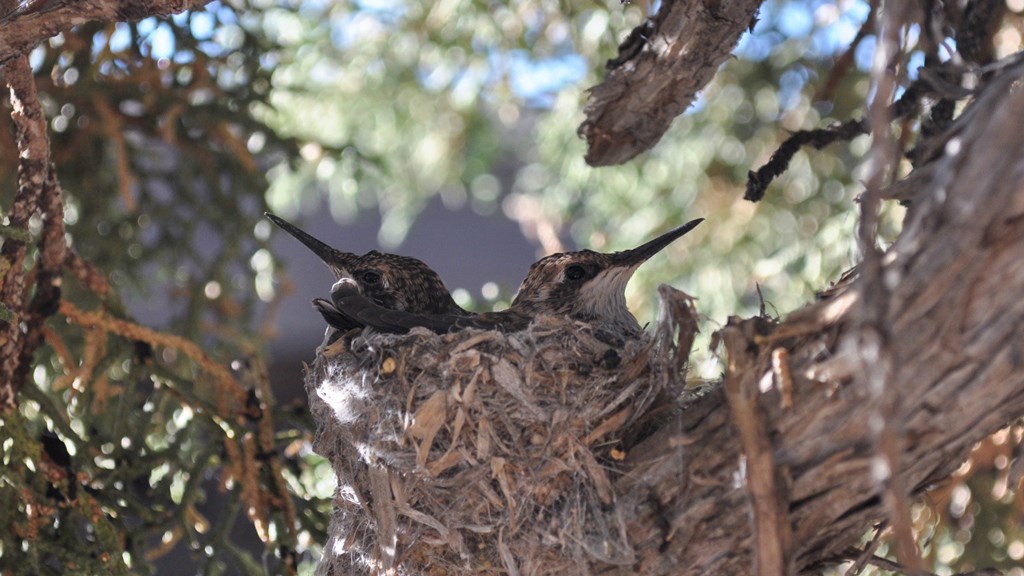
NPS
Mesa Verde NP is home to both breeding and migratory hummingbirds. For this study, the NRCA team focused on the two species that breed in the park—the black-chinned hummingbird (Archilochus alexandri) and broad-tailed hummingbird (Selasphorus platycercus).
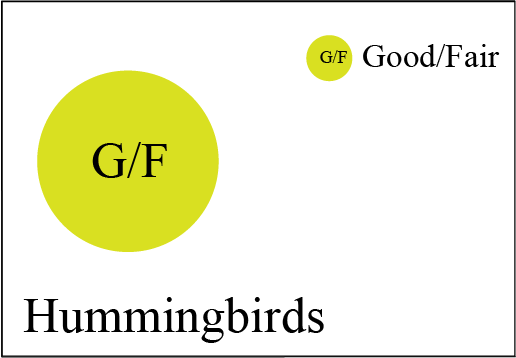
NPS
The team used a banding dataset from the Hummingbird Monitoring Network (Wethington 2023) that covers 2007 to 2022. This dataset includes a monitoring site in the park. Statistical analyses indicated that both species were stable over the roughly 15-year time period. The results were supported by a comparison to other datasets that included these two species. The NRCA team concluded that the condition was good/fair for hummingbird trends (Figure 2).
What can park managers do with this information?
Information from the NRCA will help guide planning, stewardship, and management in the park. For example, the NRCA team suggested that in areas where pinyon-juniper woodlands don’t recover naturally after fire (see the article on Upland Vegetation), park managers could focus on maintaining or enhancing deciduous plant cover. Planting species that are known to provide critical bird habitat features and resist non-native grass invasion could be an important way to support birds while preventing conversion of pinyon-juniper habitat (Redmond et al. 2023).
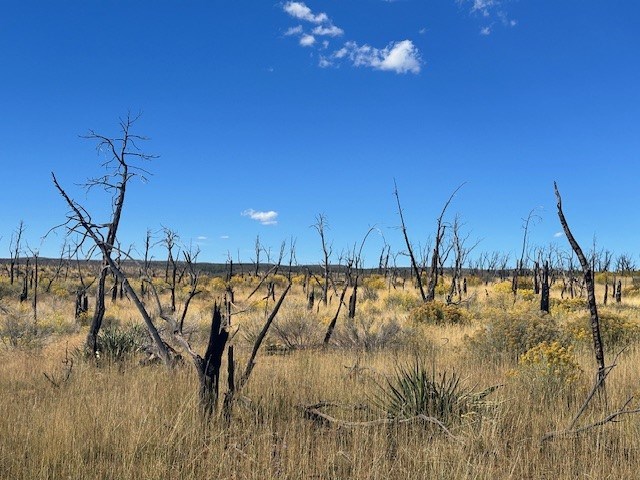
NPS / Tammy Cook
The NRCA report also identified gaps in our knowledge. Filling these gaps can help managers manage park resources better. For example, it would be valuable to continue monitoring pinyon-juniper bird persistence as post-fire succession continues in burned pinyon-juniper habitat. The next decade is key to seeing whether pinyon-juniper vegetation will reestablish in burned areas.
References
Craig, G. R., and J. H. Enderson. 2004. Peregrine Falcon Biology and management.
Kochert, M. N., K. Steenhof, C. L. McIntyre, and E. H. Craig. 2002. Golden Eagle (Aquila chrysaetos). The Birds of North America Online. Available at https://doi.org/10.2173/bna.684.
Redmond, M. D., A. K. Urza, and P. J. Weisberg. 2023. Managing for ecological resilience of pinyon-juniper ecosystems during an era of woodland contraction. Ecosphere 14(5), e4505. Available at https://doi.org/10.1002/ecs2.4505.
Reese, J., M. F. McLaren, J. M. Timmer, M. Smith, T. Walker, C. M. White, Q. Latif, D. C. Pavlacky Jr., and R. A. Sparks. 2023. Integrated Monitoring in Bird Conservation Regions (IMBCR): 2022 Field Season Report, Bird Conservancy of the Rockies. Brighton, Colorado. Available at https://bird-conservancy-of-the-rockies.github.io/IMBCR_AnnualReport_2022/.
U.S. Fish and Wildlife Service. 2025. Mexican spotted owl. Available at https://www.fws.gov/species/mexican-spotted-owl-strix-occidentalis-lucida (accessed 07 February 2025).
Vanover, L. 2022. Hummingbird size: How much does a hummingbird weight? Birds & Blooms. Available at: https://www.birdsandblooms.com/birding/attracting-hummingbirds/how-much-does-hummingbird-weigh/?srsltid=AfmBOopHcJtxnmskLPR5r7AjXNOW-1Ome0dMpiUosnEpHxH6V3pOEJik.
Wethington, S. 2023. Hummingbird Monitoring Network Banding Database (Version I) [Xl]. Hummingbird Monitoring Network.
Last updated: June 25, 2025
